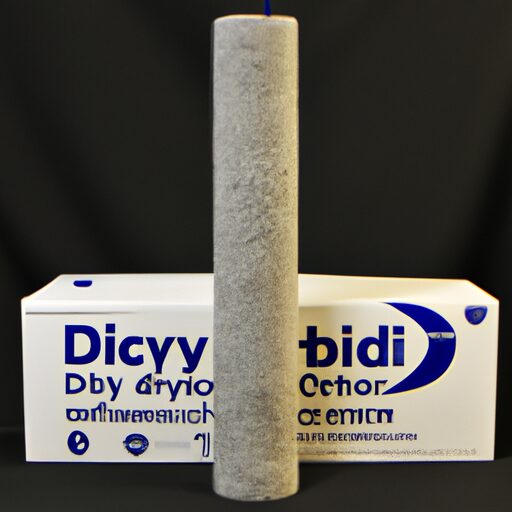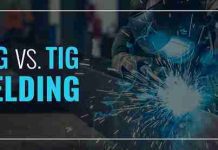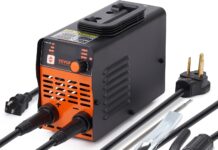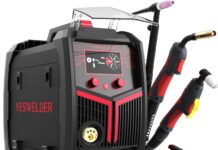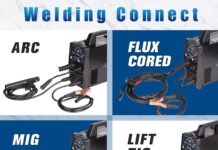Porosity in a weld, a common issue faced by welders, can lead to compromised structural integrity and reduced strength. In our article, we explore the underlying causes of this phenomenon and present effective strategies to prevent it. By understanding the factors contributing to porosity, welders can implement proactive measures to ensure a flawless weld and achieve optimal performance. So, let’s uncover the mysteries behind porosity in a weld and equip ourselves with the knowledge to tackle this challenge head-on.
Causes of Porosity in a Weld
Moisture and Contaminants
Moisture and contaminants are key contributors to porosity in a weld. When moisture is present in the welding environment, either in the base metal or electrode coating, it can vaporize during the welding process. The vaporized moisture creates gas pockets, causing porosity in the weld. Contaminants such as oil, grease, paint, or rust on the base metal can also result in porosity when they are sealed within the weld due to improper cleaning.
To prevent porosity caused by moisture and contaminants, it is crucial to store and handle electrodes properly. Electrodes should be stored in a dry environment and be protected from exposure to moisture. Effective moisture removal techniques, such as preheating or baking electrodes, can significantly reduce the presence of moisture. Furthermore, thorough cleaning of the base metal before welding helps remove any contaminants that could lead to porosity.
Improper Shielding Gas
The choice of shielding gas plays a significant role in preventing porosity in a weld. Shielding gases, such as argon, carbon dioxide, or helium, create an atmosphere that shields the weld pool from the surrounding air. If the shielding gas is not appropriate for the specific welding process or metal being welded, it can result in porosity. Inadequate gas coverage or improper flow rates can allow air to enter the weld pool, leading to the formation of gas pockets.
To prevent porosity caused by improper shielding gas, it is essential to select the appropriate gas for the welding process and specific metal. Consulting welding professionals or referring to welding standards can help determine the correct gas to use. Additionally, monitoring gas flow rates and ensuring proper gas coverage over the weld area is crucial for preventing porosity.
Faulty Wire Feed
A faulty wire feed can also contribute to the formation of porosity in a weld. Inadequate wire feeding or inconsistent wire speed can disrupt the flow of the filler metal into the weld pool. This disruption can result in incomplete fusion or insufficient gas coverage, leading to the formation of gas pockets within the weld.
To prevent porosity caused by faulty wire feed, it is necessary to have optimal wire feed control. Regular maintenance and inspection of the wire feeding system can help identify and fix any issues that may arise. Ensuring proper tension and alignment of the welding wire, as well as monitoring the wire speed, can help maintain a steady and consistent feed, ultimately preventing porosity.
Incorrect Welding Technique
The welding technique employed by the welder can significantly impact the presence of porosity in a weld. If the welding technique is incorrect, such as using excessive or insufficient heat input, welding too quickly, or improper electrode angle, it can lead to poor fusion and gas entrapment within the weld.
To prevent porosity caused by incorrect welding technique, it is crucial to train welders in proper welding procedures and techniques. Adequate heat input, which can be achieved by adjusting the welding current and voltage, is essential for ensuring proper fusion and minimizing gas pockets. Maintaining a correct electrode angle and controlling the speed of the welding travel also play a vital role in preventing porosity.
Dirty Base Metal
Dirty base metal, often contaminated with rust, oil, or paint, can be a significant cause of porosity in a weld. When contaminants are sealed within the weld, they can result in gas entrapment and the formation of porosity.
To prevent porosity caused by dirty base metal, it is essential to thoroughly clean the base metal before welding. Using appropriate cleaning methods, such as grinding, brushing, or solvent cleaning, helps remove any contaminants that could lead to porosity. Proper cleaning ensures a clean and uncontaminated weld surface, reducing the risk of gas pockets.
Excessive Welding Speed
Welding too quickly can also contribute to the presence of porosity in a weld. When the welding speed is excessive, the weld pool may not have enough time to solidify properly, trapping gases within the weld.
To prevent porosity caused by excessive welding speed, it is essential to maintain an optimum welding speed. Controlling the speed of the welding travel ensures the proper solidification of the weld pool, allowing gases to escape and minimizing the risk of porosity. Adjusting the welding speed depending on the specific welding process and metal being welded is crucial for achieving quality welds without porosity.
Inadequate Heat Input
Inadequate heat input during the welding process can also result in porosity. Insufficient heat can cause inadequate fusion between the base metal and the filler metal, which leads to the creation of gas pockets within the weld.
To prevent porosity caused by inadequate heat input, it is necessary to provide adequate heat during the welding process. Adjusting the welding current and voltage to achieve the recommended heat input for the specific metal being welded is crucial. Proper heat input ensures proper fusion and minimized gas entrapment, preventing the formation of porosity in the weld.
Incorrect Electrode Angle
The angle at which the welding electrode is held during the welding process can impact the presence of porosity in the weld. An incorrect electrode angle can result in inadequate gas coverage and poor fusion, leading to the formation of gas pockets.
To prevent porosity caused by an incorrect electrode angle, it is important to maintain a correct electrode angle throughout the welding process. Training and familiarizing welders with the correct electrode angle for the specific welding process and joint configuration is crucial. Maintaining the correct angle ensures proper gas coverage and fusion, reducing the risk of porosity.
Insufficient Joint Preparation
Insufficient joint preparation can also play a role in the presence of porosity in a weld. Inadequate cleaning, beveling, or preparation of the joint before welding can result in poor fusion and gas entrapment.
To prevent porosity caused by insufficient joint preparation, it is essential to thoroughly prepare the joint before welding. Proper joint cleaning, beveling, and fit-up are crucial for achieving quality welds without porosity. Following welding standards and specifications for joint preparation ensures a clean and well-prepared joint, minimizing the risk of porosity in the weld.
High Surface Tension of Molten Metal
The high surface tension of molten metal can also contribute to the formation of porosity in a weld. When the surface tension is high, it can prevent gases from escaping the weld pool, leading to the formation of gas pockets.
To prevent porosity caused by the high surface tension of molten metal, it is important to employ welding techniques that promote gas escape. Adequate heat input, controlled travel speed, and proper electrode manipulation help reduce the surface tension of the molten metal, allowing gases to escape and minimizing the risk of porosity.
Prevention of Porosity in a Weld
Proper Storage and Handling of Electrodes
Proper storage and handling of electrodes are essential in preventing porosity in a weld. Electrodes should be stored in a dry environment and protected from moisture. Moisture removal techniques, such as preheating or baking, can further minimize the presence of moisture in the electrode coating.
Effective Moisture Removal
Effective moisture removal is crucial in preventing porosity in a weld. Proper preheating or baking of electrodes helps eliminate any moisture present in the electrode coating, reducing the risk of gas pockets forming during the welding process.
Appropriate Shielding Gas Choice
Choosing the appropriate shielding gas is vital in preventing porosity in a weld. Selecting the correct gas for the specific welding process and metal being welded ensures optimal gas coverage and minimizes the risk of air entering the weld pool.
Optimal Wire Feed Control
Optimal wire feed control plays a significant role in preventing porosity in a weld. Regular maintenance and inspection of the wire feeding system, along with proper tension and alignment of the welding wire, help achieve a consistent and uninterrupted wire feed.
Careful Control of Welding Parameters
Careful control of welding parameters is essential in preventing porosity in a weld. Proper adjustment of welding current, voltage, and speed ensures adequate heat input, fusion, and gas escape, minimizing the formation of gas pockets.
Thorough Cleaning of Base Metal
Thorough cleaning of the base metal is crucial in preventing porosity in a weld. Adequate cleaning methods, such as grinding, brushing, or solvent cleaning, help remove any contaminants that could lead to the formation of gas pockets.
Optimum Welding Speed
Maintaining an optimum welding speed is important in preventing porosity in a weld. Controlling the speed of the welding travel allows for proper solidification of the weld pool, minimizing the risk of gas entrapment.
Adequate Heat Input
Providing adequate heat input during the welding process is vital in preventing porosity in a weld. Adjusting the welding current and voltage to achieve the recommended heat input ensures proper fusion and minimizes the formation of gas pockets.
Correct Electrode Angle
Maintaining a correct electrode angle throughout the welding process is crucial in preventing porosity in a weld. Proper electrode manipulation ensures adequate gas coverage and fusion, reducing the risk of gas entrapment.
Thorough Joint Preparation
Thorough preparation of the joint before welding is essential in preventing porosity in a weld. Proper cleaning, beveling, and fit-up of the joint ensure quality welds without gas pockets.
By understanding the various causes of porosity in a weld and implementing the appropriate prevention methods, welders can significantly reduce the occurrence of this welding defect. Proper storage and handling of electrodes, effective moisture removal techniques, careful control of welding parameters, and thorough cleaning and joint preparation are key to achieving high-quality, porosity-free welds. Additionally, selecting the appropriate shielding gas, maintaining optimal wire feed control, and ensuring adequate heat input and proper electrode angle further contribute to preventing porosity. By diligently following these preventive measures, welders can produce strong and reliable welds without the presence of porosity.


